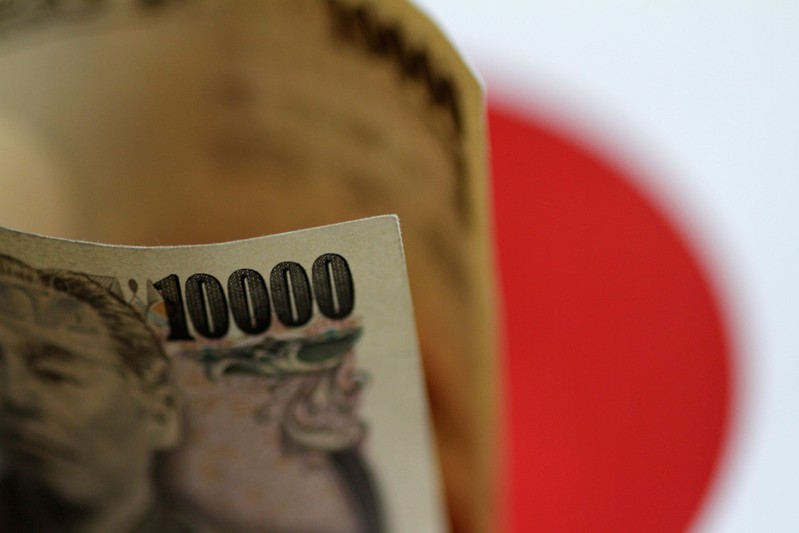
A Japan Yen note is seen in this illustration photo taken June 1, 2017. REUTERS/Thomas White/Illustration
January 4, 2019
By Tommy Wilkes
LONDON (Reuters) – The yen edged lower on Friday after its recent surge, amid hopes upcoming U.S.-China trade talks would make some progress, but remained well bid by investors fretting about a global economic slowdown.
The yen’s gains on Thursday, exacerbated by a flash crash in holiday-thinned markets, came as investors looked for safety after stocks plunged and fears of a slowdown in China grew.
On Friday, market sentiment improved after China confirmed that trade talks with the United States would be held in Beijing on Jan. 7-8. Trade tensions between the world’s two largest economies rattled financial markets for most of 2018.
The yen <JPY=> fell as much as 0.6 percent to 108.31 before recovering some of those losses to trade at 107.94. It’s now up 2.2 percent this week, its best performance since February 2018.
Dollar/yen plunged in what many traders described as a flash crash on Thursday, reaching an intra-day low of 105.25 in a technically driven sell-off.
Currencies such as the Australian dollar <AUD=> also recovered after being hit hard in the rush for safety. The Aussie gained 0.2 percent to $0.7020, off Thursday’s near-decade lows.
“Of course, the flash crash of the exchange rates on Wednesday night would not have been possible without any fundamental justification: `risk-off’ in times of increasing economic concerns,” said Commerzbank analyst Ulrich Leuchtmann.
“However, episodes like the one we saw yesterday also have the tendency of overshooting.”
Elsewhere, the euro <EUR=> held above $1.14, trading up 0.1 percent at $1.1410. The dollar index, which measures the U.S. currency against a basket of rivals, was 0.1 percent lower at 96.189 <.DXY>.
Spooked by a weaker-than-expected survey of U.S. factory activity, investors rushed to the safety of bonds while backing off expectations for more Fed rate hikes. Futures markets are now fully pricing in a rate cut by April next year.
Comments by Fed Chairman Jerome Powell later on Friday may help confirm those expectations. Any acknowledgement that growth risks are growing and financial conditions tightening is likely to be read by traders as a dovish signal.
“A weaker dollar should benefit emerging-market currencies, but for now they are hamstrung by all the uncertainty around China,” said Ray Attrill, head of currency strategy at NAB.
With some calm settling into markets on Friday, most emerging-market currencies rebounded. The South African rand <ZAR=> and the Turkish lira <TRY=> were up almost 1 percent.
A U.S. payrolls report later on Friday will provide an indication of the health of the U.S. labor market.
(Additional reporting by Vatsal Srivastava in Singapore, editing by Larry King)

